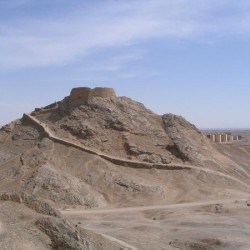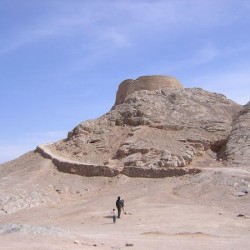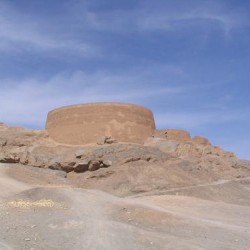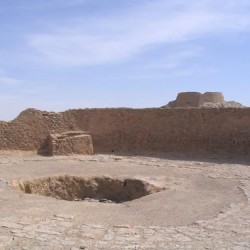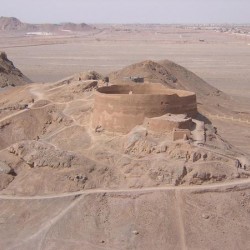Yazd
Q182394Yazd: city in Iran, known for its Zoroastrian temple and "towers of silence".

The ancient Iranians venerated holy fires, and in Yazd, one such sanctuary has survived through the ages, although the building itself is pretty recent. Still, the fire has been been burning in Yazd for at least seven centuries. The winged figure in the upper façade is - according to the Zoroastrian believers - the visual aspect of the supreme god Ahuramazda, whose nature was, according to legend, disclosed by the prophet Zarathustra. Scholars believe that the figure represents the god himself.
Until this custom was forbidden in 1970, the Zoroastrians exposed their dead to the birds in "towers of silence" (dakhmeh). There are two towers near Yazd, built in the nineteenth century according to a design from India, where many Zoroastrians live. At the terrace at the top, the dead were exposed, and devoured by birds. In this way, neither the earth nor the sacred fire were soiled.

Although the towers date back to the nineteenth century and are influenced by the practices of Indian Zoroastrians, the custom to expose the dead on towers is mentioned in the late Sasanian age. Exposure (without towers) is mentioned even earlier. The Greek researcher Herodotus of Halicarnassus wrote in the fifth century BCE that the bodies of the Magians (who were not necessarily Zoroastrians) were exposed.note Wrtiting at the end of the fourth century BCE, Onesicritus says that people were abandoned in "areas surrounded by walls".note The custom to expose the dead on mountain summits still exists in modern Tibet, where it is called an "air burial".
